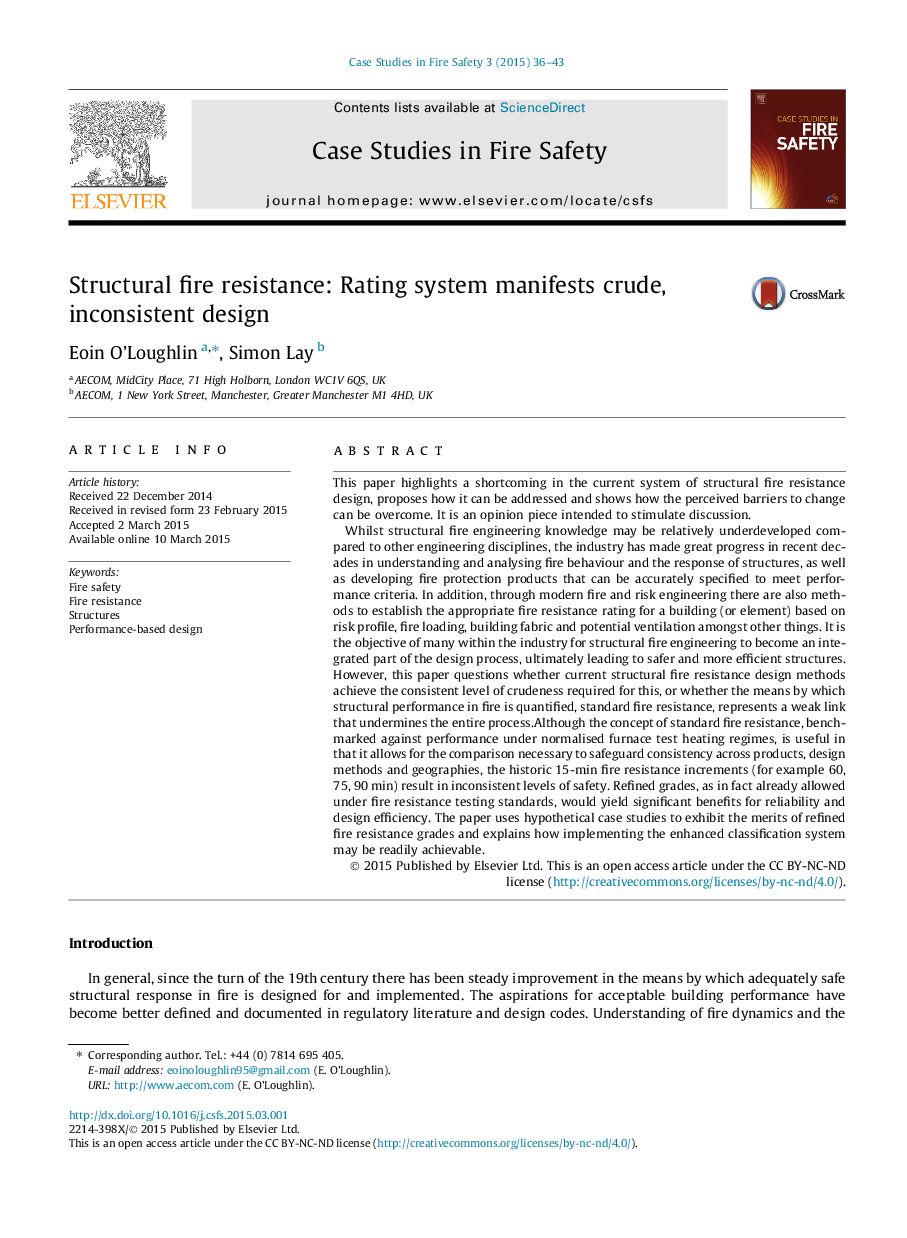| کد مقاله | کد نشریه | سال انتشار | مقاله انگلیسی | نسخه تمام متن |
|---|---|---|---|---|
| 250578 | 502882 | 2015 | 8 صفحه PDF | دانلود رایگان |
This paper highlights a shortcoming in the current system of structural fire resistance design, proposes how it can be addressed and shows how the perceived barriers to change can be overcome. It is an opinion piece intended to stimulate discussion.Whilst structural fire engineering knowledge may be relatively underdeveloped compared to other engineering disciplines, the industry has made great progress in recent decades in understanding and analysing fire behaviour and the response of structures, as well as developing fire protection products that can be accurately specified to meet performance criteria. In addition, through modern fire and risk engineering there are also methods to establish the appropriate fire resistance rating for a building (or element) based on risk profile, fire loading, building fabric and potential ventilation amongst other things. It is the objective of many within the industry for structural fire engineering to become an integrated part of the design process, ultimately leading to safer and more efficient structures. However, this paper questions whether current structural fire resistance design methods achieve the consistent level of crudeness required for this, or whether the means by which structural performance in fire is quantified, standard fire resistance, represents a weak link that undermines the entire process.Although the concept of standard fire resistance, benchmarked against performance under normalised furnace test heating regimes, is useful in that it allows for the comparison necessary to safeguard consistency across products, design methods and geographies, the historic 15-min fire resistance increments (for example 60, 75, 90 min) result in inconsistent levels of safety. Refined grades, as in fact already allowed under fire resistance testing standards, would yield significant benefits for reliability and design efficiency. The paper uses hypothetical case studies to exhibit the merits of refined fire resistance grades and explains how implementing the enhanced classification system may be readily achievable.
Journal: Case Studies in Fire Safety - Volume 3, May 2015, Pages 36–43
